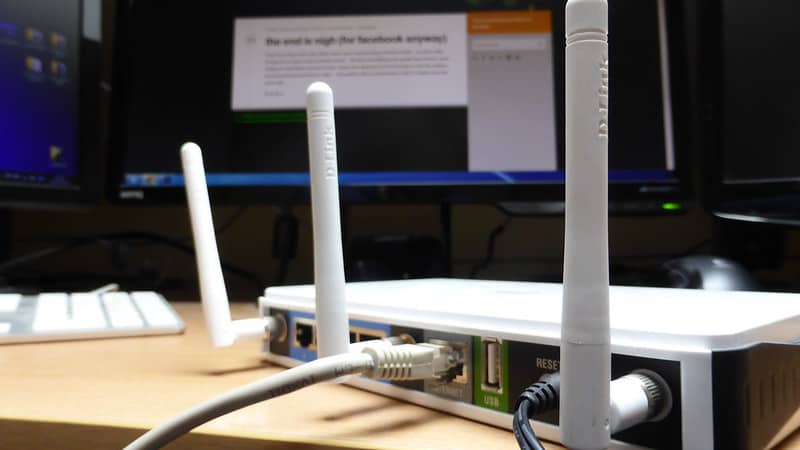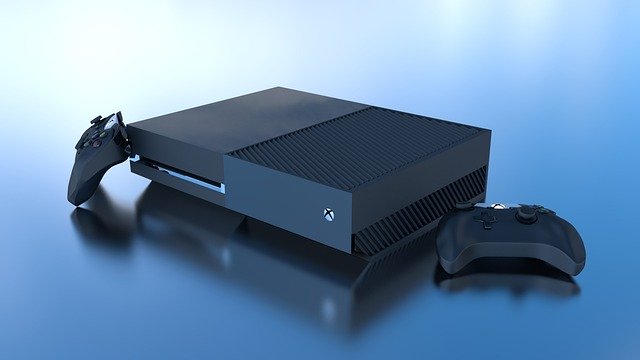
Now that everyone needs an internet connection for work or leisure, more households are subscribing to Wi-Fi and internet packages. However, the prolonged use of Wi-Fi radiation has been a constant cause of concern among the scientific field and the general population.
No, it is not safe to have a Wi-Fi router in your bedroom because of the EMF radiations that it emits. These radiations can be very harmful to someone’s health and his sleeping pattern as well.
The recommended distance between you and a Wi-Fi router should be between 15 to 20 feet. For children, the distance is longer, at least 30 feet, since their developing bodies are more susceptible to EMF waves.
To understand more about the effects of a Wi-Fi router in your bedroom continue reading!
The Nature Of Wi-Fi Radiation
Wi-Fi (also known as Wi-Fi or WLAN) is a wireless network that consists of at least one Wi-Fi antenna that is connected to the internet and a group of devices.
Some examples of these devices are computers, laptops, and/or other wireless devices that communicate wirelessly with the Wi-Fi antenna.
As a result, each of these wireless networking devices will connect with the internet wirelessly. While there is a 5 GHz band reserved for future Wi-Fi use, all of the studies examined here used 2.4 GHz Wi-Fi.
Individuals and organisations with ties to the telecommunications industry have argued that Wi-Fi has no and cannot possibly have any negative health effects.
However, as Wi-Fi exposures become more popular, and many of our exposures are without our knowledge or consent, there is growing concern about potential Wi-Fi health effects.
Is It Safe To Put A Wi-Fi Router In Your Bedroom?
No, keeping a router in your bedroom is not recommended. Near proximity to the router will expose you to an unnecessary amount of EMF and RF radiation.
The risks of this radiation become greater as it gets closer to you. Furthermore, exposure to EMF radiation while sleeping can be harmful to your wellbeing.
When people talk about Wi-Fi radiation, they’re just talking about the Wifi network, which is a type of radiofrequency and microwave radiation, which is part of the EMF.
According to the Environmental Research Journal, there are several detrimental effects on human health caused by long exposure to Wi-Fi radiation. EMF radiation is emitted by most electronics, particularly wireless ones.
RF, electric field and magnetic field radiation are the three types of EMF radiation. A LED light-bulb can emit electric field type of radiation and your laptop would almost certainly emit magnetic radiations and wireless signals from Wifi routers\ mobile phones emit radiofrequency radiation.
Wi-Fi radiations are simply a form of radiofrequency (RF) radiation, which is also known under the name of microwave radiation. The electromagnetic spectrum’s far end contains this RF radiation.
While it can be a little energy consuming wave and theoretically a type of non-ionizing radiation, this does not rule out the possibility that it may cause health problems.
People have said for a long time that non-ionizing radiation isn’t harmful to your health because it lacks the ability to really remove an ionizing particle also known as a charged particle.
Moreover, we understand that this type of radiation, particularly when exposed for long periods of time, can cause serious health problems.
The WHO listed RF radiation, such as that released by the Wi-FI router in the category of the Group 2B potential human carcinogen in 2011.
The Ideal Distance
Consider this: a cell phone tower located 150 meters (500 feet) away releases equal amounts of radiation as a Wi-Fi router located 5 meters away (approximately 15 feet).
So, do you think you’d feel safe sleeping 500 feet from a cell tower? The minimum safe distance for a Wi-Fi router is between 15 and 20 feet.
Exposure recommendations are available from the Austrian Medical Association, the International Institute of Building Biologists, The BioInitiative Study, and the FCC.
We suggest using an EMF meter to measure your environment since Wi-Fi power levels can differ drastically. If that is not possible, some of the EMF home consultants agree that no one should be within 10 feet of a Wi-Fi antenna.
Ideally, a distance of at least 20 feet between yourself and a router should be respected as you are assured to significantly reduce your EMF exposure. If you have small children, it is best to have them at least 30 feet away.
Effects Of Wi-Fi Router On Sleep
Sleeping near your wifi router can be dangerous for your health and well-being. Your router can have a greater impact on your day-to-day life than you realize.
Short- and long-term effects have been seen in studies, ranging from minor to potentially life-altering. The most serious issue with routers seems to be that the consequences of prolonged exposure are cumulative.
As a result, being constantly exposed puts you at a higher risk. According to some reports, Wi-Fi has the following possible health effects:
1. Cellular Death
Cellular death, also known as apoptosis, is one of the worst impacts of EMF on the body. While this is something that happens all the time in humans, we do not want it to happen at a more rapid and uncontrollable pace.
Our bodies recycle old cells, which causes cell death. External forces, on the other hand, can only cause cell death through damage. The increasing speed of cellular death may cause premature aging and cancer in some people.
2. Decreased Fertility In Men
Constant sensitivity to Wi-Fi signals has been linked to a reduction in sperm count. In different studies, some participants experienced not only a decrease in sperm count but also a decrease in motility. All men should be worried about and take precautions to protect themselves from its egregious ramifications. Find out more here.
3. Oxidative Stress And Cancer
Oxidative stress, or cellular damage, is a term used to describe cellular damage. Again, if you are exposed for a long enough period of time to EMF radiation, oxidative stress could result in cancer.
4. Sleep Disturbance
Another common effect of being exposed to Wi-Fi is sleep disturbance due to altered melatonin levels. Part of the issue is that we never turn off our routers; they continue to send out signals even though we are sleeping and not using the internet.
These EMF waves will interrupt your sleep, resulting in cell damage and cellular repair issues. For more in this read my other post Can EMF radiation cause sleep problems?
Ways to protect yourself against Wi-Fi Radiation
Electronic devices such as computers, tablets, and mobile phones all emit Electromagnetic Radiation (EMF), making it difficult to shield yourself from this low-frequency energy emission.
However, thanks to physics and modern technology, it is possible to reduce the exposure levels and minimize the risks. DefenderShield proposes a great variety of products that you use on a daily basis equipped with EMF radiation protection systems.
The company provides EMF blocking accessories and clothing for 24/7 protection against EMF waves, particularly vulnerable parts of your body, like your head, neck, and hands.
Find some of the products below.
- Laptop heat shield
- EMF Protection & Anti-Radiation Blanket
- Tablet + iPad EMF Radiation Protection Case
- Pregnancy EMF Radiation Protection Baby Belly Band
- EMF Radiation Protection Gloves
Also, most devices should be held one foot away to minimize exposure by 80% and four feet away to eliminate exposure by 98%. Many mobile phone manufacturers advise that you keep your phone at least a few inches from your body at all times.
Additionally, EMF radiation is eliminated as EMF sources are removed, so you do not have to make drastic lifestyle changes. Simply remove any EMF outlets you are not using, such as Wi-Fi routers, home voice assistants, extra televisions, and extra mobile devices.
Even if it only means eliminating them from the room you spend the most time in, you would be reducing your EMF exposure significantly. However, due to Wi-Fi hotspots, mobile phone networks, and people around you using wireless devices, EMF radiation is still present in the atmosphere.
Be aware of the second-hand sources to which you might be exposed.


